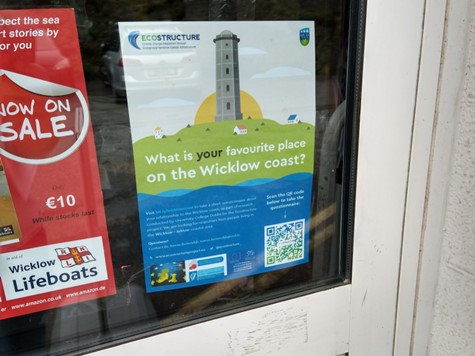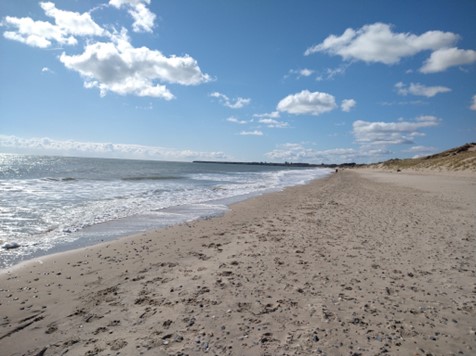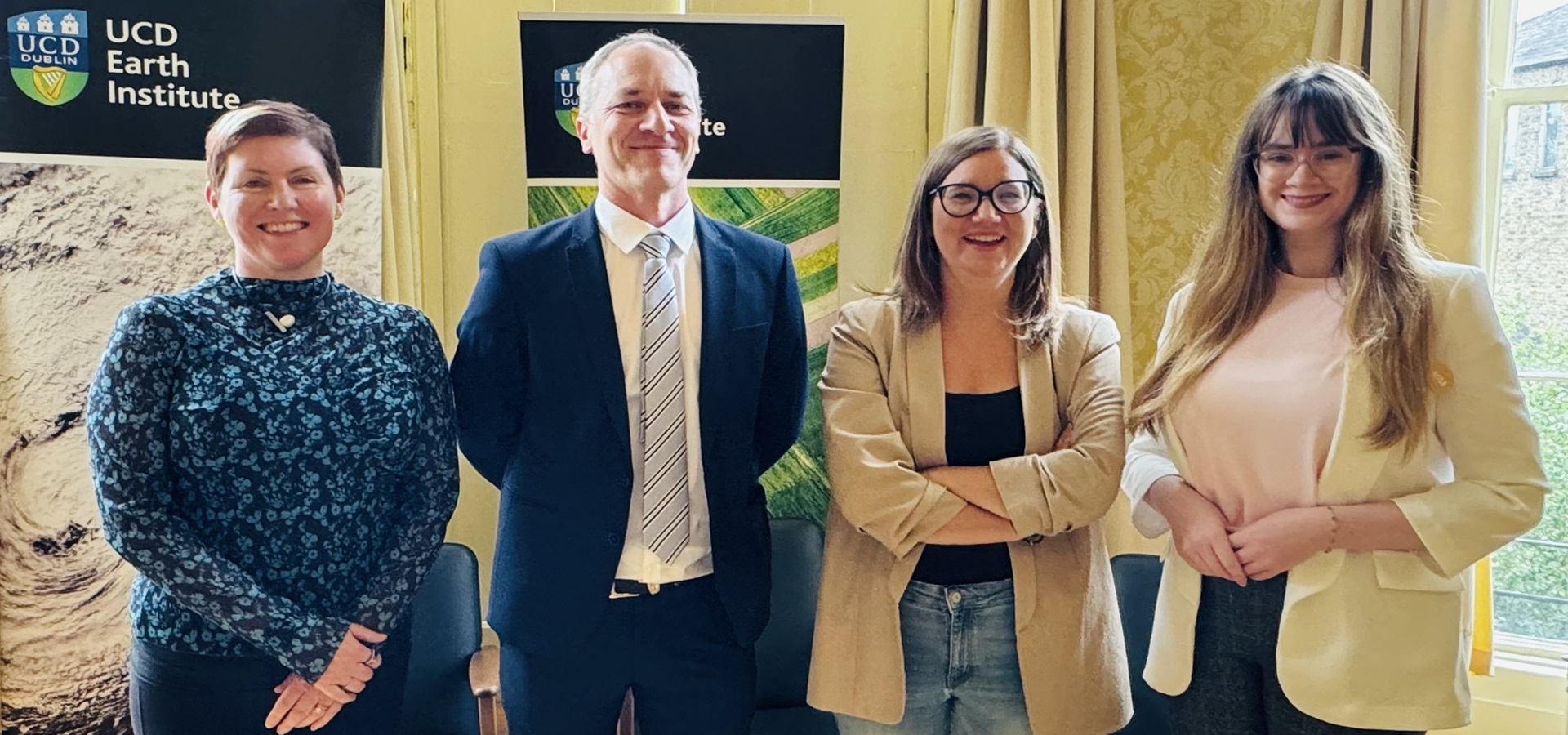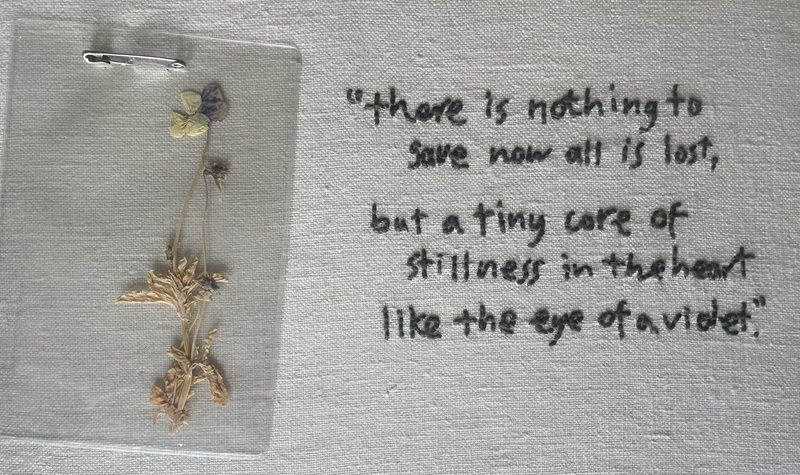Tomas Buitendijk from iCRAG, the School of Earth Sciences and the Earth Institute at UCD tells us about why the coastal landscape matters to people and how this relationship can be protected during periods of change.
The coastline of Co. Wicklow is subject to some of the highest levels of erosion in Ireland. As a result, local communities have seen much loved places disappear. For example, residents of the town of Arklow still recall the popular North Beach, which was largely swept away by Hurricane Charley in 1986. What was left of the beach had to be reinforced with wide stretches of rock armour, leaving little space for dog walking, bathing, and other activities. Beach-going residents now depend on the town’s South Beach, hoping not to lose this place in a similar way. More recently, Storm Betty swept away parts of the Murrough, a popular coastal walkway in Wicklow town that also protects against erosion.
The experiences of Co. Wicklow residents confirm that coastal landscapes are among the places where the effects of climate change are felt most strongly. Among other things, this is caused by increasing rates of erosion and heavier storms. To understand how local residents are affected by changes in the landscape, we must first study what coastal places mean to people. This information can help planners make good decisions when adapting the landscape to the challenges of climate change, by ensuring that the connection between people and places is protected from negative impacts.
As part of the Ireland-Wales Ecostructure project, we engaged with residents of the towns of Wicklow and Arklow in Ireland to better understand the connections to their most frequently visited places on the coast. We treated the community like a large network, based on the idea that people, places, objects, animals, and the landscape itself all contribute to ‘what’ a community is.
To understand what connects people to coastal places, we used interviews and a questionnaire. We asked residents how often and for how long they visited a place, why they visited, what they did when they visited, and how they felt at the time. We carried out 7 interviews and received 164 questionnaire responses, which helped us understand the everyday reality of people’s visits to places on the coast and what those visits meant to them.
|
|
|
Study promotion at the RNLI station in Wicklow town. Photo by Tomas Buitendijk. |
We found that the connections between people and places in the coastal landscape are informed by a sense of place attachment as well as particular functions associated with each place. For example, it was universally understood that visits to coastal places are good for both physical and mental health. People also mentioned that their most frequently visited places brought them closer to other residents, especially during the Covid-19 pandemic. Other connections between residents and coastal places had to do with the ability to experience nature and its wildness. People also felt the desire to protect the coast for current and future generations, including by making it more accessible, keeping it clean, and reinforcing places under threat from erosion.
We found that the age and gender of residents and the type of place they visited did not appear to influence the connection between people and places. There was an almost perfect 50/50 split between how frequently people visited natural and constructed places, but both types of place had similar functions. This suggests that artificial structures do not necessarily have a negative impact on people’s experience of the landscape. Rather, the value of artificial places to residents depends on what they mean to people, just like natural settings. To give an example, a sandy beach and a harbour wall might equally give someone the opportunity to clear their head and to smell, hear, and see the sea!
|
|
|
Brittas Bay, one of the most frequently visited natural places in the study area. Photo by Tomas Buitendijk |
Other studies have proven that changes in the (coastal) landscape can have a large negative impact on the local community, for example leading to distress or a sense of loss. Notably, researchers at UCD previously described a community in southeast Ireland that was affected by the loss of a beach as a result of coastal erosion. People struggled with this change because they no longer had the same opportunities for tourism and recreation, meeting friends and family, and enjoying the coastal landscape.
More and more often, changes are needed in the coastal landscape to protect people and places against the impact of climate change and to prepare them for a more resilient future. We have shown that it is important for planners to understand the connections between people and coastal places, to protect important functions of the landscape from being diminished or lost during periods of change. In this way, we can pave the way for a good coastal future for all.
This study was conducted by Tomas Buitendijk (UCD) with Elisabeth Morris-Webb (Bangor University), Jeneen Hadj-Hammou (Bangor University), Stuart Jenkins (Bangor University) and Tasman Crowe (UCD). It was carried out as part of the Ecostructure project, which ran from 2017 to 2022 and involved five partner universities: Aberystwyth University, Bangor University, and Swansea University in Wales and University College Cork and University College Dublin in Ireland. Ecostructure was part-funded by the European Regional Development Fund (ERDF) through the Ireland-Wales Cooperation Programme 2014-2020.
Essay first published 23 November 2023.
About the author
Tomas Buitendijk is a Postdoctoral Research Fellow based at iCRAG, the School of Earth Sciences, and the Earth Institute, UCD. He previously completed his PhD at Dublin City University, studying changing representations of marine environments in twenty-first century fiction and film. He is interested in working with local communities to understand the value of the coastal and marine environment. He has worked on the Ireland-Wales Ecostructure project, and more recently the Taking Stock project at iCRAG.
About the series
The A-Z of Environmental, Climate and Sustainability Research is a new series of short essays by UCD postdoctoral and postgraduate researchers, technical and research support staff, about their work. The series is developed and curated by the Earth Institute Associate Member Committee led by Hannah Gould, a PhD student at BiOrbic and the UCD School of Architecture, Planning and Environmental Policy, and Earth Institute Communications and Engagement Officer Liz Bruton. If you'd like to submit a piece for the series do get in touch!
Find out more about the Anthropocene with Nick Scroxton, Bees with Katherine Burns, Cannabis with Caroline Dowling, Degrowth with Ciarán O'Brien, Education with Georgina Fagan, Finance with Shane McGuinness, Gaia with Federico Cerrone, Hydrometry with Kate de Smeth, Innovation with Hannah Gould, Justice with Lauren Minion, Kelp with Priya Pollard, Landscape part 1 with Tomas Buitendijk, Landscape part 2 with Amy Strecker and Amanda Byer, Reusing microbial ‘bathwater’ for sustainable drug production with Laura Murphy, and Mammals with Virginia Morera-Pujol in our latest essays.
Further reading
News report the impact of Storm Betty (August 2023) on the Murrough, an important and much beloved coastal protection feature in Wicklow: https://www.independent.ie/regionals/wicklow/wicklow-district/alarm-as-storm-betty-washes-away-huge-area-of-murrough/a221216092.html
, , , , & (2023). Coastal residents' affective engagement with the natural and constructed environment. People and Nature, 00, 1–15. https://doi.org/10.1002/pan3.10561



